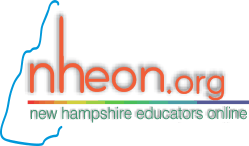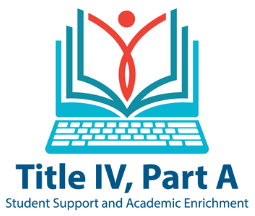|
|||||||||||
|
Tell us what you would like to see or give us an awesome resource to add to this toolkit.
|
General Questions About Your Grants
Districts/LEAs should contact Stan Freeda (Stanley.J.Freeda@doe.nh.gov, 603.271.5132) with any questions. Questions About the Online Grants Management System For general operational questions about the Online Grants Management System, please reach out to Stan Freeda (Stanley.J.Freeda@doe.nh.gov, 603.271.5132). For more in-depth questions about the use of the Online Grants Management System, or for questions about funding, monthly reporting, or financial coding in the Online Grants Management System, please reach out to Elizabeth Clarke (Elizabeth.A.Clarke@doe.nh.gov, 603-271-7455).Join the NHED Title Programs Listserv The NHED Title Programs Listserv is for Title Program Coordinators to have a place to communicate and collaborate with each other and crowd source information and ideas! Subscription is voluntary, and you can adjust your settings and password once you join. NHED communication with the field will still go through the NHED Title Program Coordinators and the contacts for their individual grants to make sure everyone is reached. This is an opportunity for LEA coordinators to communicate, ask questions, and collaborate with each other along with NHED folks. We can all grow our programs stronger by working together.
Technical Assistance for ESEA Title Programs at NHED ESEA Title Program Office Hours ESEA Title Program Coordinators at NHED The NHED Office of ESEA Title Programs page on the NHED website has more information about all the federal entitlement programs along with contact informtion. Federal Funds Information and Guidance The NHED Bureau of Federal Compliance (BFC) has developed Federal Fund Information Sheets to assist subrecipients of Federal funds with understanding the compliance requirements associated with the various aspects of their grants when developing and implementing policies and procedures. NHED ESEA Programs Consolidated Monitoring The Office of ESEA Title Programs, in accordance with Uniform Guidance, monitors local educational agency (LEA) subawards on an annual basis. The Office takes a consolidated approach in ensuring subawards are utilized in accordance with federal statutes, regulations, and the terms and conditions of the subaward. Annually, the Office of ESEA Title Programs, conducts a risk assessment to ensure that risk variables and their associated weights reflect current risk that could lead to mismanagement or inefficiencies within the ESEA Title grant programs. Each LEA that is awarded Title funding is assigned a point value based upon these criteria and assigned a risk level of either high-risk, moderate-risk, or low-risk based on the total number of points assigned. The risk level assigned determines which LEAs are monitored. At minimum, those identified as high-risk will be monitored. Depending on capacity, those identified as moderate-risk may also be monitored. The five indicators that will be monitored for Title IV-A are:
Additional Information
NHED ESEA Technical Assistance and Guidance The Office of ESEA Title Programs issues regular guidance in support of federal funding sources and updates to processes at the New Hampshire Department of Education (NHED). The NHED ESEA Programs Technical Assistance and Guidance page on the NHED website offers technical assistance documents, field guidance, PowerPoint presentations, and recordings from office hours held by the Bureau Administrator. For any one-on-one technical assistance or requests to provide additional assistance or information, please contact the Bureau of Instructional Support.
Allowable uses of funds under each of the three content areas may include (but are not limited to):
Allowability in Title IV-A is based on whether the appropriate process was followed, and the activity is based on a need identified through a needs assessment and prioritized through consultation with a Stakeholder Team. The flowchart below will give you an easy way to determine allowability. Well Rounded Educational Opportunities Some general activities that support providing all students with access to a well-rounded education:
Template for Writing Activities that support Well-Rounded Educational Opportunities Well Rounded Educational Opportunities infographic Safe and Healthy Students Some general activities that support improving school conditions for student learning:
Template for Writing Activities that support Safe and Healthy Students Safe and Healthy Students infographic Effective Use of Technology Some general activities that support improving the use of technology in order to improve the academic achievement and digital literacy of all students:
Template for Writing Activities that support Effective Use of Technology Effective Use of Technology infographic | ||||||||||
| Top | Home | Introduction | Overview | Needs | Activities | Entering Activities | Help | Documents | Reporting | Understanding Title IV-A Course |
Last updated September 30, 2024
The Titile IV-A Project Planning Toolkit is supported by New Hampshire EdTech at the New Hampshire Department of Education.

